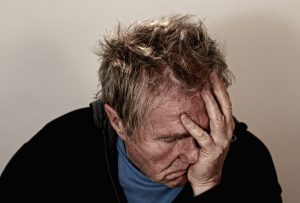You are more likely to have a stroke if you are above the age of 65; however, 1 in 4 young people can also suffer a stroke- when this happens, every second matters.
What you do in these crucial moments have the potential to help save somebody’s life.
This article highlights what you can do to give a loved one the best chance of surviving a stroke.
A stroke is often referred to as a “brain attack.” Usually, one side of the brain is robbed of the blood and oxygen supply it needs to function correctly, as a vital blood vessel to the brain has clot or burst.
The more a stroke goes untreated, the more permanent brain damage can occur. These can include amnesia (loss of memories), permanent full-body paralysis, or even death. But there are treatments which could be given if a patient reaches the emergency room in time.
Here are 3 Things to Do When Someone Is Having a Stroke
1. Immediately call 000
 Once you suspect that someone’s having a stroke, dial 000 immediately.
Once you suspect that someone’s having a stroke, dial 000 immediately.
Furthermore, if you are at a workplace, you may be able to contact a safety officer or medical expert after calling 000.
The most difficult thing is to recognize the symptoms of a stroke. You also need to immediately tell the dispatcher, “I believe I am having a stroke” or “I believe my loved one is.”
2. Note the time you see symptoms
A clot-busting medication named tPA, or tissue plasminogen activator, can be given to somebody if they are having a stroke, possibly reversing or preventing symptoms from developing. But it needs to be provided within 4.5 hours of the onset of symptoms, experts say.
Patients may also be candidates for more complex treatments, such as endovascular treatments. Endovascular procedures can involve surgically removing a clot that caused a stroke, or fixing an aneurysm that can be a swollen blood vessel which bursts and causes stress in the brain.
Endovascular treatments for ischemic stroke, the most frequent type of stroke, must be administered within 24 hours of symptom onset, and the sooner treatment gets delivered, the lower the chances of irreversible brain damage.
If you witness someone stroking out, take note of the exact time the symptoms began; this way, the hospital staff can make a more informed decision about treatment choices.
3. Perform CPR if necessary
Most stroke patients do not need CPR. But if your friend or partner is unconscious, check their heartbeat and breathing. If you find none, call 000 and begin CPR while you are waiting for the ambulance to arrive.
You can also request the 000 dispatcher to walk you through how to do CPR, which includes repeated, continuous chest compressions.
Alternatively, get professionally trained in how to perform CPR so you too can save lives in an emergency situation.